- Home
- Barry Unsworth
Crete Page 7
Crete Read online
Page 7
The Church of St. Titus, at 25 Avgoustou Street, near Kalergon Square, sums up in its architectural history the ebb and flow of power on the island. Titus was a disciple of St. Paul the Apostle, who appointed him first bishop of Crete. His church in Iraklion was founded by the Byzantines, taken over and rebuilt by the Venetians, turned into a mosque by the Turks, restored by them after the earthquake of 1856, renovated by the Orthodox Church after the Turks had departed, reconsecrated in 1925.
Quite a checkered career. But through all these vicissitudes, we discovered one object that has survived in its pristine state, and that is Titus’s skull, which has been preserved as an object of devotion—the rest of his body was never recovered. True, the skull has traveled about a good deal. Until the early Middle Ages it was kept in the ancient basilica at Gortyn, also dedicated to the saint; then it was moved to Iraklion; then—out of fear of the invading Turks—transferred to Venice and kept there for some centuries. Finally, in 1966, it was restored to the capital and reposes in a reliquary in this quiet church, free from further threats and alarms, or so one hopes.
Iraklion: The Church of St. Titus
We found other things too that have escaped mutilation. The Christians pulled down the minaret and surmounted the dome with a cross, but in the small courtyard in front of the church the unpretentious Ottoman fountain still keeps its place, with its exquisitely carved stone, its channel for the washing of feet, and outlets for running water—always running water for the Muslim lustration. The fountain is beautiful, and it has survived by virtue of its modest dimensions—there is a lot to be said for keeping low to the ground.
The churches of Crete can be a guide to the labyrinth of history even when they have long ceased to be buildings at all. The Monastery of San Francesco exists no longer, but it was once the most imposing Catholic foundation on the island, built by the Venetians in the first century of their rule. Now Iraklion’s Archaeological Museum covers the site. But it has not vanished altogether. While it was still being used as a mosque, the severe earthquake of 1856 brought most of it down, but Turkish troops rescued the door frame and built it into their barracks, for reasons not clear, perhaps in the hope of Allah’s blessing, though it was a Christian door frame originally, having been donated to the church in 1410 by Pope Alexander V, a Cretan named Petros Philargos, who, according to some sources, had previously been a monk at the monastery. There were no less than three popes at that time and considerable doubt as to who was St. Peter’s legitimate heir. Alexander died after only ten months in office, a mysterious death—many believed he had been poisoned by his successor. The barracks crumbled away in their turn, but the door survived: It now serves as northern entrance to the law court on Dikeossinis Street and must have witnessed the passage of a good many malefactors. Five hundred years and a mystery or two, all in the span of a door frame.
The Church of Agia Ekaterini on the square of the same name, which we arrived at going westward down Kalokerinou toward the Chania Gate, has been put to a use which—like the former mosque inside the fortress walls in Rethymnon and the former Church of San Francesco in Chania, now a museum—makes very good sense indeed. Formally a celebrated monastic academy and art school, it is now a museum of religious art, housing a collection of Cretan icons it would be difficult to match elsewhere, in particular several by Michalis Damaskinos, a contemporary of El Greco, also Cretan, less famous than him but a very considerable artist, one of the first Cretan painters to introduce elements of Renaissance humanism into the severely formal tradition of Byzantine icon and fresco painting.
Agia Pelagia, a few miles west of Iraklion, is where a lot of people choose to stay who want to combine a beach holiday with trips to Knossos and various other Minoan sites in the vicinity of the city. The phrase “a lot of people” seems like an understatement in view of the multitudes that descend on the region at the onset of summer. The headland above the village is more or less entirely staked out by huge hotel complexes, places where you can easily get lost—it might take you a quarter of an hour to walk through the beautiful gardens from your chalet or villa or bungalow to the nearest place where you can get a cup of coffee, or find someone to tell you where a cup of coffee is to be got.
This is the exclusive, expensive face of tourism in Crete. The other face can be found below, in the continuous string of bars, discos, tavernas that front the narrow strip of beach and extend inland to a wilderness of car-rental agencies, fast-food eating places, supermarkets, and a jumble of apartment houses and small hotels and half-finished building projects. The roads designed to link these places haven’t had time yet to catch up. They too are often half finished, sometimes hardly started, sometimes ending in piles of rubble or vacant lots. The pace of development outstrips the maps, however up-to-date these may appear to be. What looks blessedly empty on the map turns out to be in full spate of building. There is a point, not easily measurable but nonetheless real, when the influx of visitors and the changes of structure needed to accommodate them passes from sustainable to destructive. And it is a point of no return. The anthropologist Sonia Greger, writing in 1993, already sounded a warning note:
Tourism along the north-east coastal strip of Crete has, I would say, reached crisis stage with respect to the near break-down of traditional values, hospitality and sense of community…. One cause of crisis in tourist development is escalating competition between locals, as they throw out their traditional means of support and subsistence.
The larger, more expensive hotels overlooking the bay also cause damage to local communities, in this case by virtually depriving them of their own land. Extensive areas of the promontory, including large stretches of the shoreline, are closed off. By Greek law everyone has the right of access to the shore, regarded as common land. This is an excellent principle, but it is not applied in practice. The hotels have imposing gates and entrance driveways, and security guards to keep an eye on who comes and goes. Unless you are a guest or very good at bluffing, you are unlikely to get through. This means that a local inhabitant who once swam from these beaches, or kept a small boat for fishing, or walked on the cliffs and enjoyed the splendid views across the bay, and who was accustomed to regard these things as his birthright, has been—as the result of a stroke of the pen in some remote office—entirely dispossessed.
Such vast hotels are in any case founded on a wrong concept of what a hotel should be. “Megalux” is the effect aimed at. The “mega” is present in the hundreds of detached bungalows, in the acres of gardens, the vast, marble-appointed reception areas. But the “lux” part is lacking. The capital outlay has been enormous, the need to recoup very urgent. Package tours are the quick way to do this. For these hotels the ideal visitor is not a private person but a unit, a number, part of a package. A spirit of suspicion prevails. The guest must furnish himself with a card that has his category on it; without this he is lost, unable to reply satisfactorily to the hotel staff who are constantly asking him who and what he is. In one hotel with a five-star deluxe rating, one of the most expensive on the island, outside a breakfast room with seating for a thousand people, so large that one can hardly see across it, there is a notice in various languages requesting the guests not to walk away with the knives and spoons. The women who work as cleaners are routinely searched at the gatehouse before being allowed to leave.
At the entrance to the dining room an impeccably dinner-jacketed headwaiter, having glanced at our card, murmured that in our case meals were extra. We found out that—just as in the case of people who want to avoid being mugged on the street—you must look as if you know where you are going. As we wandered bemused among clumps of tamarisk and orange groves and volleyball pitches and Olympic-size pools and palatial conference rooms, a security guard in the dress of a Cretan bandit, festooned with weapons, emerged from the shrubbery and asked to see the card proving we were bona fide guests.
Lying just a few miles south of Iraklion, the magnet that draws so many people to this region of Crete
is Knossos, indisputably one of the greatest prehistoric sites in the world. This is where the Labyrinth, which has exercised the Western imagination for millennia, is said to have been, though its real nature is still disputed. Some maintain that it derives from the Minoan habit of agglutinative building, adding rooms to already existing rooms till their houses and palaces came to resemble mazes—in that case, perhaps the palace of Knossos, which in its heyday had more than a thousand rooms on five floors, was itself the labyrinth.
Others argue that the name derives from religious practice. Labrys in Lydian means “doubled-headed ax,” which was an object of cult worship among the Minoans. So labyrinthos might mean “the place of the sacred ax.” Costis Davaras mentions the belief held by some that the real place of the labyrinth was not Knossos at all, but the cave at Skotino, some miles east of Iraklion. As already noted, it is difficult to pursue any line of inquiry regarding Crete, or take any route, without coming across a cave before long. This is one of the most impressive on the island, 530 feet deep, with a main chamber like the nave of a cathedral and winding galleries.
The theory I like most but believe least is that the labyrinth refers to Cretan dancing patterns. At the close of Book Eighteen of The Iliad, Homer describes a Cretan folk dance whose weaving motions make maze-like patterns that form and dissolve. Here it is in Robert Fitzgerald’s translation:
A dancing floor as well,
he fashioned, like that one in royal Knossos
Daedalus made for the Princess Ariadne …
Trained and adept they circled there with ease
The way a potter sitting at his wheel
Will give it a practised whirl between his palms
To see it run; or else, again, in lines
As though in ranks, they moved on one another:
Magical dancing!
Independently of the theories, the ancient myths have remained. The palace of Knossos was the heart of Bronze Age Crete; at the heart of the palace was the labyrinth; and at the heart of the labyrinth was the monstrous Minotaur. Here the hero Theseus came, here the king’s daughter Ariadne fell in love with him and gave him the ball of twine which helped him to find his way out after slaying the monster, here Daedalus the master artificer made the wings for himself and his son Ikarus so that they could escape from the maze. Ikarus, it will be remembered, flew so near the sun, the wax that bound his feathers melted and he plunged into the sea. The island in the Sporades where his body was washed up is named after him, Ikaria. A real island, a mythic punishment for human rashness …
The excavation of Knossos by the great British archaeologist Arthur Evans has itself by now passed into the zone of myth—at least, it has assumed that blend of fact and legend somehow characteristically Cretan. What led him to it seems to have been an accident of his own physical constitution more than anything else. Joan Evans, in her biography of him, tells us that he was extremely shortsighted. If he held things very close to his eyes he could see them in the most amazing detail, but at any farther distance everything was blurred. Not much of a blessing in general terms, but it enabled Evans to make out with phenomenal exactitude the hieroglyphics on the bead seals—an earlier form of signet ring—that he came across in various parts of the eastern Mediterranean. The Athenian dealers told him that most of these came from Crete. And it was in fact in Crete that he found them again. He could not decipher the signs, but he recognized affinities with Egyptian and Mesopotamian hieroglyphics. They brought him to the conviction, one which changed the whole course of his life, that on this island there had once existed a highly developed civilization, the remains of which still lay under the ground.
It is not given to many men, proceeding almost single-handed, acting on a solitary conviction and guided by a mixture of deduction and intuition, to demonstrate to the world the existence of a hitherto totally unsuspected civilization. It was given to Evans.
In March 1899 he recruited Cretan workmen and began digging into the mound of Kephala at Knossos. He was at first looking for further examples of the hieroglyphics he had found on the seal stones. He was never to succeed in deciphering these, but in a matter of days he realized that much more than hieroglyphics was involved in the enterprise. He was in the process of uncovering the remains of a palace complex vast in its extent, showing evidence of engineering and architectural techniques so advanced that they could only have belonged to a highly developed society. It was still commonly believed at the time that European civilization began with the Greeks, somewhere about the year 700 B.C. Evens realized he was being given the opportunity to supply a gap of 1,500 years in Europe’s knowledge of its own past.
Amazing things were unearthed at Knossos in these last months of the nineteenth century. An early find was a cup-bearer fresco, discovered in two pieces, the first representation ever brought to light of a young man of the prehistoric Cretan Bronze Age, the society that Evans was to call Minoan. Day by day the ground plan of the palace was uncovered: porticos, bathhouses, courtyards, stairways, the throne room with the throne of King Minos still in its original place. But perhaps the most remarkable find of all was the remains of a fresco showing a young man somersaulting, with incredible hardihood and acrobatic skill, over the back of a charging bull, and a girl standing with arms outstretched as if to catch him as he lands. In the months that followed they encountered this theme of bull vaulting again and again. The meaning still eludes us—at least it is still argued about, which comes to the same thing. Popular sport? Gladiatorial contest? Religious practice based on the worship of the bull? Or are the stories of human sacrifice true after all? Was one of these bull leapers the hero Theseus, as we find related in Mary Renault’s novel The Bull from the Sea?
Visiting Knossos by car these days confronts one with a different kind of puzzle—and yet another example of Cretan enterprise. Which is the official parking lot? On the last half mile or so of the road that leads to the site, we counted seven at least, competing for custom. The official one was free, the others were not, though they all had large and prominent and closely similar signs proclaiming their identity as the true Knossos CarPark. Only later, when we had been maneuvered into one of the cramped and rutted unofficial parks and paid for our ticket, did we both, simultaneously, realize the difference: The official parking lot was the one with the least conspicuous sign, and it had no person at the roadside in an official-looking cap waving and smiling and guiding you in.
To our dismay the site itself was swarming with visitors, many in large groups brought by tour buses, conducted by cheerfully positive guides who give out as established fact what must surely, after so long and on such sketchy evidence, be matters of speculation. “This was the queen’s bedchamber, and this was her dressing room, where the ladies-in-waiting attended on her….”
We clamber to identify the rooms, understand the layout of this vast place, more like a town than a single building, where monarchs and priests and artisans and slaves lived nearly four thousand years ago. A longish line of people are waiting for their turn to view the throne room, one of the most celebrated sights of Knossos. After ten minutes or so of gradual forward movement we reach the cagelike bars which, separate the anteroom from the throne room. We peer through the bars, straining to make out details in the dim interior: the pale, streaky-looking gypsum throne of Minos on the right, still standing on the spot where it was found, flanked by copies of the original frescoes of crouching griffins; the sunken bath, perhaps for ritual cleansing—Minos, it seems, was both priest and king; a sort of recess beyond, perhaps serving as a shrine, or perhaps … But now there sounds the voice of the latter-day priestess, guardian of the sacred precinct, who is keeping an eye on things from her bench in the anteroom: “Move along, please! Don’t stay too long at the viewing point!”
We have been allowed approximately thirty seconds. Shuffling forward again, we get trapped in a corner, surrounded by seemingly enormous Scandinavians, in our ears the loud and confident voices of various guides. Not pa
nic, perhaps, but feelings of oppression certainly. We are in a modern version of the Knossos labyrinth, how can we get out? Here, as in a different way in those vast beach hotels that specialize in packages, being the solitary individual has its snags. Wandering about the ruins, trying to make head and tail of things, the single person gets hemmed in, confused by alien voices. The member of the group does not suffer this fate: He has the comfort of numbers, he occupies the space, he is with the others, listening to the same voice, looking at the same things.
Knossos: the queen’s apartments
Very difficult, in such a crowd, to exercise the powers of imagination and intuition needed to feel the wonder of this place, get a sense of the remote society that once flourished here. We all get in one another’s way with our exclamations, our sun hats, our ungainly scramblings. Only at certain times, early in the morning, or during the hot middle hours of the day when the bus excursions have their scheduled lunchtime, the extraordinary nature of the place comes over one in a wave. The storerooms with their great earthenware jars for oil and grain; the workshops where the jewelers and smiths and potters made the objects for use and decoration never since surpassed for the quality of their workmanship and design; the royal quarters with their spacious, light-filled apartments; the vivid frescoes depicting people in their daily lives and all manner of birds and animals and flowers—dolphins, partridges, octopuses, lilies. Any of these things, even the smallest detail, can become a focal point for wonder, and one begins to understand what Pendlebury, who knew more about the palace of Minos than just about anyone else, meant when he wrote thus of its final destruction, probably due to a combination of earthquake, volcanic eruption on the nearby island of Santorini, and the onslaught of invaders: “With that wild spring day at the beginning of the fourteenth century B.C. something went out of the world which the world will never see again; something grotesque perhaps, something fantastic and cruel, but also something very lovely.”

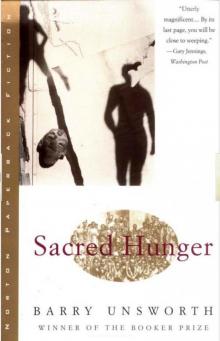 Sacred Hunger
Sacred Hunger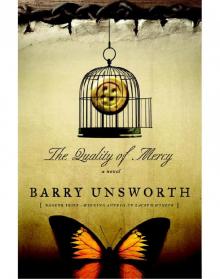 The Quality of Mercy: A Novel
The Quality of Mercy: A Novel The Songs of the Kings: A Novel
The Songs of the Kings: A Novel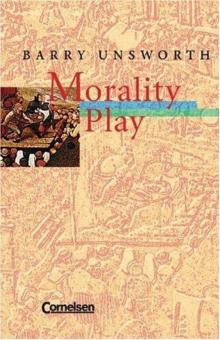 Morality Play. Mit Materialien. (Lernmaterialien)
Morality Play. Mit Materialien. (Lernmaterialien)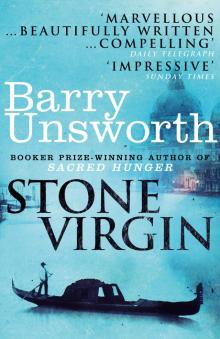 Stone Virgin
Stone Virgin Land of Marvels
Land of Marvels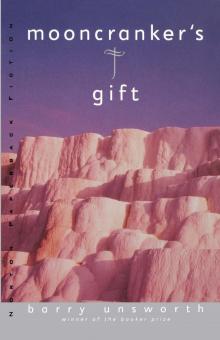 Mooncranker's Gift
Mooncranker's Gift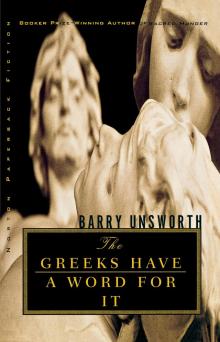 The Greeks Have a Word for It
The Greeks Have a Word for It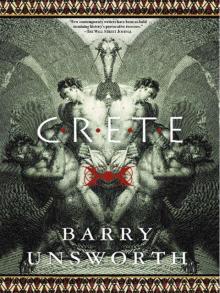 Crete
Crete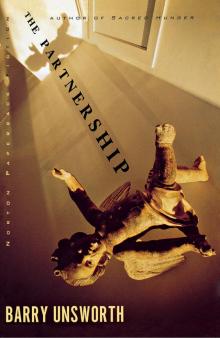 The Partnership
The Partnership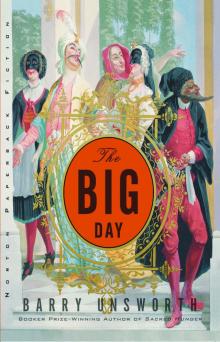 The Big Day
The Big Day The Hide
The Hide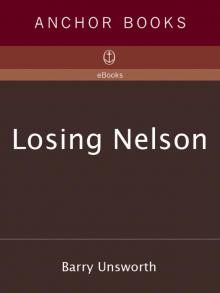 Losing Nelson
Losing Nelson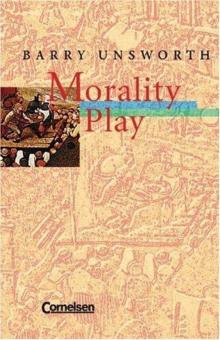 Morality Play
Morality Play Land of Marvels: A Novel
Land of Marvels: A Novel The Ruby In Her Navel
The Ruby In Her Navel